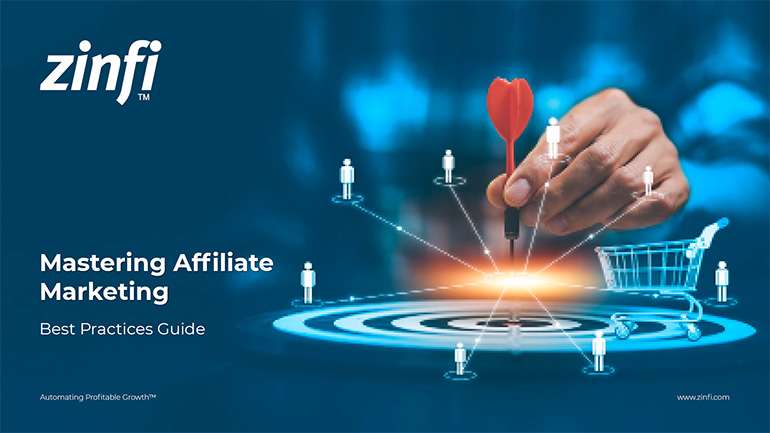Best Practices Articles

How to Work with Channel Management Software Vendors
As more and more companies add channel to their sales equation, the competition to reach the end user via channel has increased substantially. New partners enter the marketplace in the same way vendors do, but in the end what matters is having access to a group of successful partners who have been in business for a while. This is not easy without a structured channel management approach. That’s where automation comes in. Organizations need to pick the right channel management software platform, not only to make sure their go-to-market approach via channel is fully optimized and earns the respect of their channel partners, but also to substantially increase sales productivity.
With that as a backdrop, let’s look at some things to consider when selecting a vendor. It’s important to keep in mind that channel management software is a new category. While partner relationship management (PRM) software concepts and even tools have been around for more than a decade, until recently truly affordable solutions didn’t really exist. Also, PRM by itself does not address the full range of channel management challenges, but requires a complimentary solution that most analysts call today through-channel marketing automation (TCMA). So, for channel management automation to be complete, an organization needs to select the right vendor not just for PRM, but also for TCMA. This increases the complexity quite a bit, especially in light of the fact that not a lot of data exists about most of these vendors.
So what is the right approach in selecting a vendor for channel management software? That is exactly what we will explore in the five steps outlined below.
- Select the right criteria for your organization. Before you can begin vendor selection, you need to think through your own channel strategy and objectives for the next three years. Is your strategic focus going to be primarily partner recruitment? Partner training? Partner enablement (like demand generation, etc.)? Managing the partners for maximum productivity? You may also have one or more objectives. Before you can begin to engage with a channel management software vendor, you truly need to think this part through. A channel management software vendor can help you execute your strategy better, but they cannot develop one for you. That’s your job, and it’s a very important step.
- Plan your deployment in sequence. Once you have figured out what your priorities are, the next step is to make sure you plan the deployment of your channel management software in sequence. Why is this important? Before deployment you are likely to have a lot of manual processes in place, so ripping everything out at once could cripple your ongoing operations. Therefore, you need to make sure that your channel management software vendor does all installation work and maintenance work in a stepwise fashion—and before or after normal work hours—so you can integrate automation into your workflow one module at a time with minimal disruption to everyday business.
- Define channel requirements three years out. Once your deployment plan is in place, the next step is to project where you want your channel management automation to go beyond the first year. In fact, you may be better off thinking through the first three years before you turn your focus to the first year. It’s not unusual for an organization to seek a channel management software vendor without having a clear picture of what their objectives are for the next three to five years. I realize that in today’s fast-paced business environment, five years may seem like a lifetime. But you should be able to articulate at least a one-to-three-year vision that establishes your channel management priorities. Are you going to focus on recruitment? Do you have plans for segmenting the partner base in multiple ways? Is there a specific geographical evolution that is going to drive your investment strategy? Are you planning a major product launch in the next 12-18 months? Once you have established a series of business objectives, the next step is to lay those out in deliverables and make sure your channel management software vendor has the capacity to scale along with your business needs. Too often, organizations will focus too narrowly on one specific, short-term objective, and once they have addressed it they struggle with their vendor, who it turns out doesn’t have the capabilities they really required and doesn’t scale.
- Review the vendor’s roadmap. Once you have nailed down a three-year strategic vision for your organization, it’s crucial to review your vendor’s product roadmap to make sure it’s a good match. Most companies in the channel management software space are small, with 100 employees or fewer, and many have just a few dozen. When you are an enterprise buying software for your channel, the investment you’re making is quite critical. You need to be certain that the channel management software vendor you select has processes in place to continuously incorporate input from you and other customers to grow their feature sets. The channel management software segment today is highly immature. Certainly it is growing, but it’s still at an early stage, and there is no large, dominant vendor. Traditional players like Salesforce, SAP and Microsoft who have customer relationship management (CRM) offerings have not provided the appropriate tools and technologies to their customer base to build out purpose-built channel management software systems. As a result, there is a plethora of vendors that have evolved over the last decade or so, but only a very few—like ZINFI—are really growing globally. As you talk to prospective channel management software vendors, you need to make sure they understand what it takes to build enterprise-scale software—not just by offering a few cool features and functionalities, but by building out an organization that will scale with market requirements. In the early stages of a market, there can be a lot of merger and acquisition activity. When you are buying from a vendor that has recently bought two or three smaller competitors, be aware: They may have a hodge-podge of tools and systems in place that will be really difficult to scale. Don’t be fooled by an impressive-looking feature set. You need to dig deep to understand their roadmap and how they are likely to evolve, especially from an architectural perspective. If your marketing team doesn’t have the skillset to do this digging, engage someone from your IT team to carefully evaluate the vendor’s overall infrastructure and architecture.
- Prepare to innovate against competitors by leveraging automation. Can your vendor realistically sustain the continuous innovation you need to compete? This may be the most important question to ask yourself. It’s one thing for a vendor to come up with an initial product idea or an initial set of features. But can they take the next step and grow an organization that can continuously innovate and deliver new feature sets? Can they truly support your evolving needs in this still-emerging segment of channel management software? Having innovation rest on the shoulders of a company’s founder or on one or two key individuals is quite risky, especially when you are depending on your channel management software vendor to support your enterprise channel management needs on a worldwide scale.
Channel management is complex, a point we have explored in detail in a number of earlier articles. However, if you take a structured approach in building the right set of criteria, planning out deployment, defining your organizational strategy over several years, carefully reviewing the roadmap of your channel management software vendor and making sure they have a structure in place to constantly innovate, you should be able to find a vendor who can not only address your near-term needs, but also lay the foundation for significant maturity and innovation opportunities in the future. In order to fully leverage the capabilities of channel management software, you also need to constantly think about how you’re going to drive your channel best practices. We’ve discussed this in a previous article, and we’ll continue to address how to best drive channel management maturity in future articles. However, if you already have a channel management software partner that listens to your needs, constantly innovates and builds out feature sets ahead of your needs, then you are very likely to be successful, not only in the near term but also in building a channel for the long term that is highly efficient and productive, and has the reach that you need to drive scale and efficiency.
Best Practices Guidebook
 Winning with Partner Advisory Councils: Best Practices for Partner Engagement & Growth
Winning with Partner Advisory Councils: Best Practices for Partner Engagement & GrowthDownload Guide
 The Future of Partner Ecosystems Best Practices
The Future of Partner Ecosystems Best PracticesDownload Guide
 The AI Revolution: How Technology and Talent are Shaping the Future
The AI Revolution: How Technology and Talent are Shaping the FutureDownload Guide
 Top 105 Partner Management Metrics that Matter Best Practices
Top 105 Partner Management Metrics that Matter Best PracticesDownload Guide
 Mastering PRM Integration Best Practices
Mastering PRM Integration Best PracticesDownload Guide
 Building a Sales Partner Portal with Salesforce Best Practices
Building a Sales Partner Portal with Salesforce Best PracticesDownload Guide
 Building and Managing Partner Ecosystems Best Practices
Building and Managing Partner Ecosystems Best PracticesDownload Guide
 Mastering Co-Marketing and Co-Selling Best Practices
Mastering Co-Marketing and Co-Selling Best PracticesDownload Guide
 Transforming Partner Ecosystems Best Practices
Transforming Partner Ecosystems Best PracticesDownload Guide
 Mastering Partner Ecosystems Best Practices
Mastering Partner Ecosystems Best PracticesDownload Guide
 Mastering Partner Onboarding Best Practices
Mastering Partner Onboarding Best PracticesDownload Guide
 Partner Ecosystem Management Best Practices
Partner Ecosystem Management Best PracticesDownload Guide
 B2B Marketing in the Age of Intelligence Best Practices
B2B Marketing in the Age of Intelligence Best PracticesDownload Guide
 Multi-Partner Co-Selling Best Practices
Multi-Partner Co-Selling Best PracticesDownload Guide
 A Guide to Enhance Channel Sales Efficiency
A Guide to Enhance Channel Sales EfficiencyDownload Guide
 Mastering Affiliate Marketing Best Practices
Mastering Affiliate Marketing Best PracticesDownload Guide
 The Ultimate Guide to Channel Partner Management
The Ultimate Guide to Channel Partner ManagementDownload Guide
 Top 10 Trends in 2024 Partner Relationship Management
Top 10 Trends in 2024 Partner Relationship ManagementDownload Guide







